Aya Hagishima
Are You Comfortable Now: Deep Learning the Temporal Variation in Thermal Comfort in Winters
Aug 20, 2022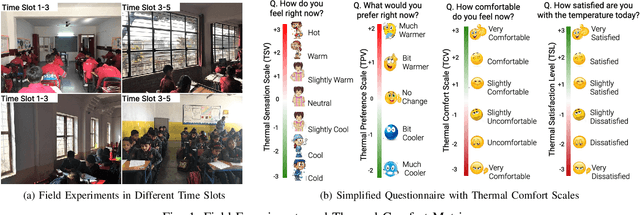
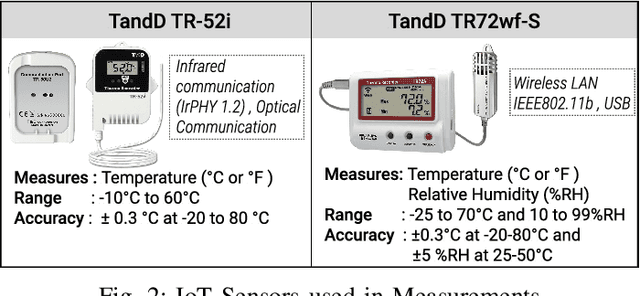

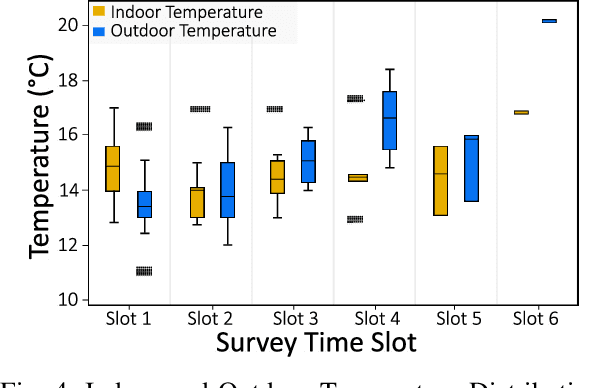
Abstract:Indoor thermal comfort in smart buildings has a significant impact on the health and performance of occupants. Consequently, machine learning (ML) is increasingly used to solve challenges related to indoor thermal comfort. Temporal variability of thermal comfort perception is an important problem that regulates occupant well-being and energy consumption. However, in most ML-based thermal comfort studies, temporal aspects such as the time of day, circadian rhythm, and outdoor temperature are not considered. This work addresses these problems. It investigates the impact of circadian rhythm and outdoor temperature on the prediction accuracy and classification performance of ML models. The data is gathered through month-long field experiments carried out in 14 classrooms of 5 schools, involving 512 primary school students. Four thermal comfort metrics are considered as the outputs of Deep Neural Networks and Support Vector Machine models for the dataset. The effect of temporal variability on school children's comfort is shown through a "time of day" analysis. Temporal variability in prediction accuracy is demonstrated (up to 80%). Furthermore, we show that outdoor temperature (varying over time) positively impacts the prediction performance of thermal comfort models by up to 30%. The importance of spatio-temporal context is demonstrated by contrasting micro-level (location specific) and macro-level (6 locations across a city) performance. The most important finding of this work is that a definitive improvement in prediction accuracy is shown with an increase in the time of day and sky illuminance, for multiple thermal comfort metrics.
Building Matters: Spatial Variability in Machine Learning Based Thermal Comfort Prediction in Winters
Jun 28, 2022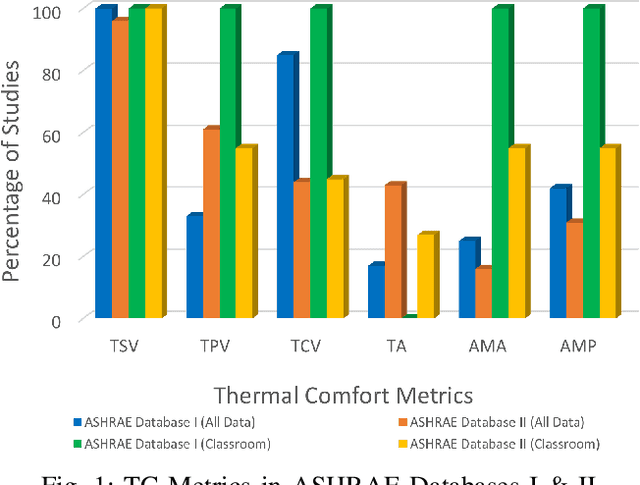
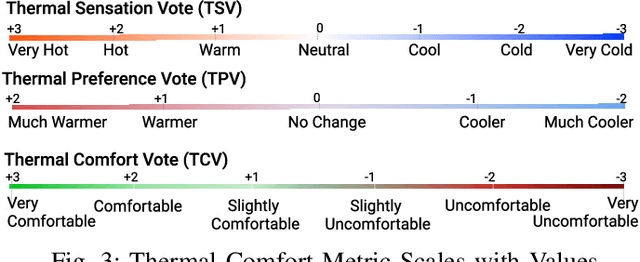

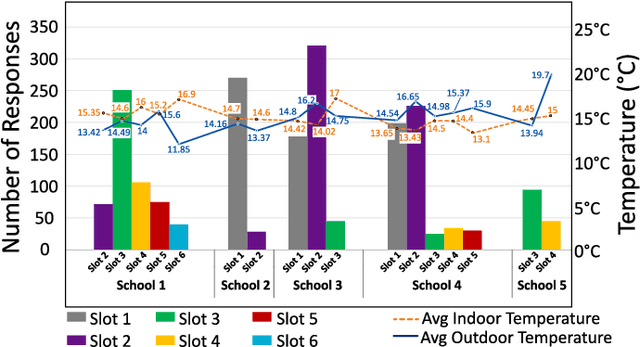
Abstract:Thermal comfort in indoor environments has an enormous impact on the health, well-being, and performance of occupants. Given the focus on energy efficiency and Internet-of-Things enabled smart buildings, machine learning (ML) is being increasingly used for data-driven thermal comfort (TC) prediction. Generally, ML-based solutions are proposed for air-conditioned or HVAC ventilated buildings and the models are primarily designed for adults. On the other hand, naturally ventilated (NV) buildings are the norm in most countries. They are also ideal for energy conservation and long-term sustainability goals. However, the indoor environment of NV buildings lacks thermal regulation and varies significantly across spatial contexts. These factors make TC prediction extremely challenging. Thus, determining the impact of the building environment on the performance of TC models is important. Further, the generalization capability of TC prediction models across different NV indoor spaces needs to be studied. This work addresses these problems. Data is gathered through month-long field experiments conducted in 5 naturally ventilated school buildings, involving 512 primary school students. The impact of spatial variability on student comfort is demonstrated through variation in prediction accuracy (by as much as 71%). The influence of building environment on TC prediction is also demonstrated through variation in feature importance. Further, a comparative analysis of spatial variability in model performance is done for children (our dataset) and adults (ASHRAE-II database). Finally, the generalization capability of thermal comfort models in NV classrooms is assessed and major challenges are highlighted.
Multi-task Learning for Concurrent Prediction of Thermal Comfort, Sensation, and Preference
Apr 26, 2022


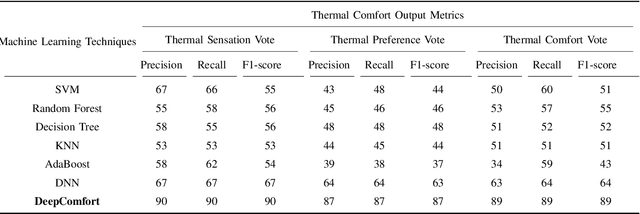
Abstract:Indoor thermal comfort immensely impacts the health and performance of occupants. Therefore, researchers and engineers have proposed numerous computational models to estimate thermal comfort (TC). Given the impetus toward energy efficiency, the current focus is on data-driven TC prediction solutions that leverage state-of-the-art machine learning (ML) algorithms. However, an indoor occupant's perception of indoor thermal comfort (TC) is subjective and multi-dimensional. Different aspects of TC are represented by various standard metrics/scales viz., thermal sensation (TSV), thermal comfort (TCV), and thermal preference (TPV). The current ML-based TC prediction solutions adopt the Single-task Learning approach, i.e., one prediction model per metric. Consequently, solutions often focus on only one TC metric. Moreover, when several metrics are considered, multiple TC models for a single indoor space lead to conflicting predictions, making real-world deployment infeasible. This work addresses these problems. With the vision toward energy conservation and real-world application, naturally ventilated primary school classrooms are considered. First, month-long field experiments are conducted in 5 schools and 14 classrooms, including 512 unique student participants. Further, "DeepComfort," a Multi-task Learning inspired deep-learning model is proposed. DeepComfort predicts multiple TC output metrics viz., TSV, TPV, and TCV, simultaneously, through a single model. It demonstrates high F1-scores, Accuracy (>90%), and generalization capability when validated on the ASHRAE-II database and the dataset created in this study. DeepComfort is also shown to outperform 6 popular metric-specific single-task machine learning algorithms. To the best of our knowledge, this work is the first application of Multi-task Learning to thermal comfort prediction in classrooms.
 Add to Chrome
Add to Chrome Add to Firefox
Add to Firefox Add to Edge
Add to Edge